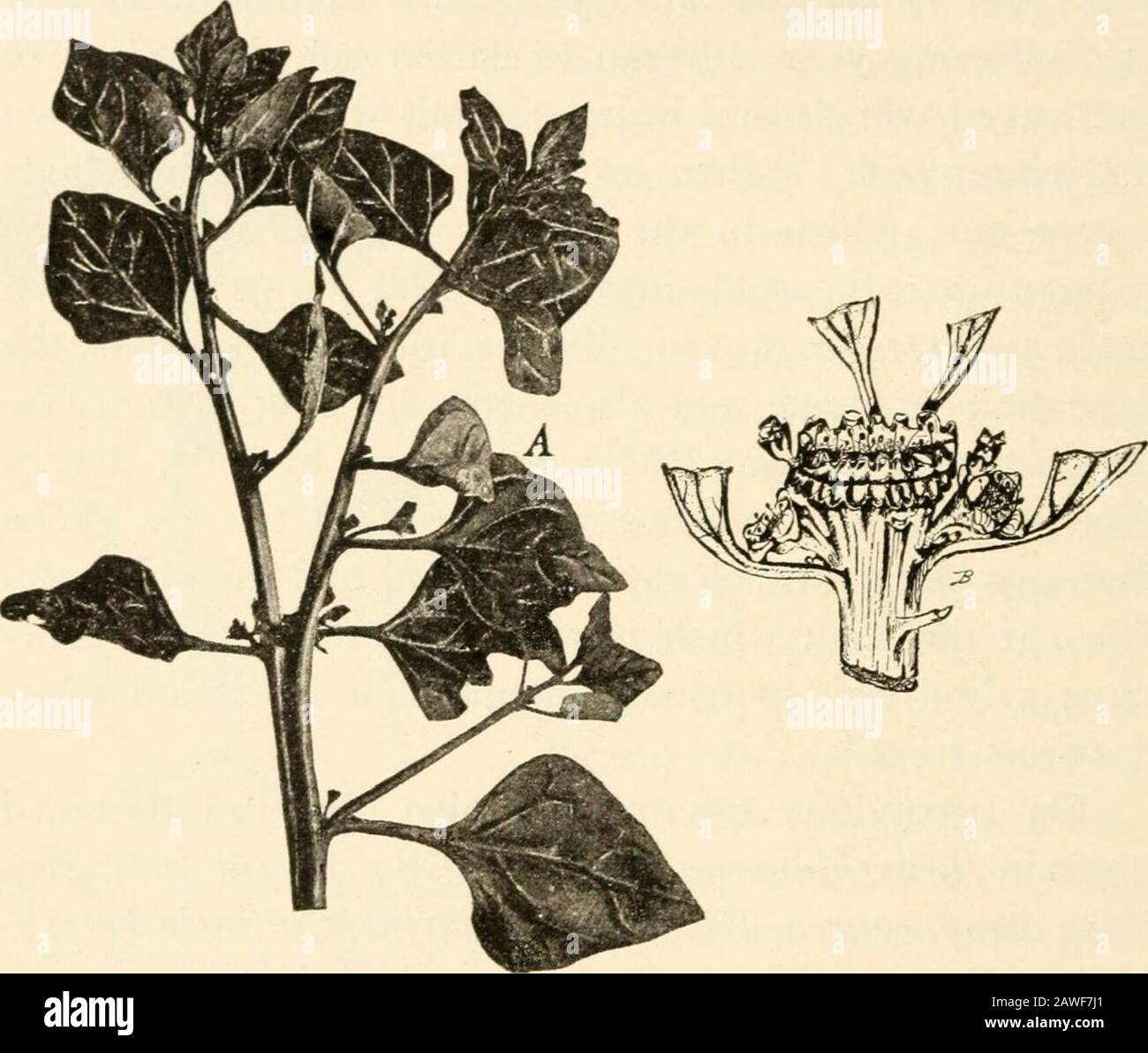The mutation theory; experiments and observations on the origin of species in the vegetable kingdom . erved flattenedstems in Antirrhhinm ma jus, Artemisia Ahsynthium, Sca-hiosa atropiirpurea, Dianthus pliimariiis, CoUinsia hetero-pliylla, C. grandiflora, C. violacea and Tetragonia ex-pansa (Fig. 78) ; and amongst tetracotyls in ScropJui-laria nodosa and Collinisia ziolacea and other species.- In many cultures I have observed that fasciations aremore common amongst tricotylous plants than amongstdicotylous ones, but I shall only deal in detail with anexperiment on Aspenda aziirea. In the sprin

Image details
Contributor:
The Reading Room / Alamy Stock PhotoImage ID:
2AWF7J1File size:
7.2 MB (250.9 KB Compressed download)Releases:
Model - no | Property - noDo I need a release?Dimensions:
1717 x 1456 px | 29.1 x 24.7 cm | 11.4 x 9.7 inches | 150dpiMore information:
This image is a public domain image, which means either that copyright has expired in the image or the copyright holder has waived their copyright. Alamy charges you a fee for access to the high resolution copy of the image.
This image could have imperfections as it’s either historical or reportage.
The mutation theory; experiments and observations on the origin of species in the vegetable kingdom . erved flattenedstems in Antirrhhinm ma jus, Artemisia Ahsynthium, Sca-hiosa atropiirpurea, Dianthus pliimariiis, CoUinsia hetero-pliylla, C. grandiflora, C. violacea and Tetragonia ex-pansa (Fig. 78) ; and amongst tetracotyls in ScropJui-laria nodosa and Collinisia ziolacea and other species.- In many cultures I have observed that fasciations aremore common amongst tricotylous plants than amongstdicotylous ones, but I shall only deal in detail with anexperiment on Aspenda aziirea. In the spring of 1892I selected the hemi-tricotylous, tricotylous and tetra- ^ Kruidk. Jaarh. Gent, 1894, Plate XI, {Abies excelsa).^Ber. d. d. hot. Gcs., Vol. XII, p. 36. 374 Tricotyloiis Races. cotyKjiis seedlings from conunercial seed of this prettylittle annual (Fig. 79). I cultivated them and savedtheir seeds and in the following year planted out thevariants and the atavists separately. There were 37 ofthe former group and 15 atavists. From the formerthere arose 28 flattened stems and branches; from the. Fig-. 78. Tetragonia expansa. A, branch split by forking:B, comb-bke expanded terminal flower of a flattenedmain stem. latter only four, that is to say, a proportion of 75% and27% respectively. It should be mentioned that all thevariants among the seedlings were planted out and thatsome of these gave rise to rather weak plants, whilst ofthe atavists I selected the strongest seedlings only. These, however, in spite of their greater individual strength and Tricotyly ami the .Irramjcmcul of I.raics. 37? in spite of their origin from IricoLylous parents, prt^ducedconsiderably fewer fasciations than the triccjtyls. We come now to the spiral torsions. Idiese occurredin several of my tricotylous races nearly every year since1893, and often in considerable numbers. As a rule they